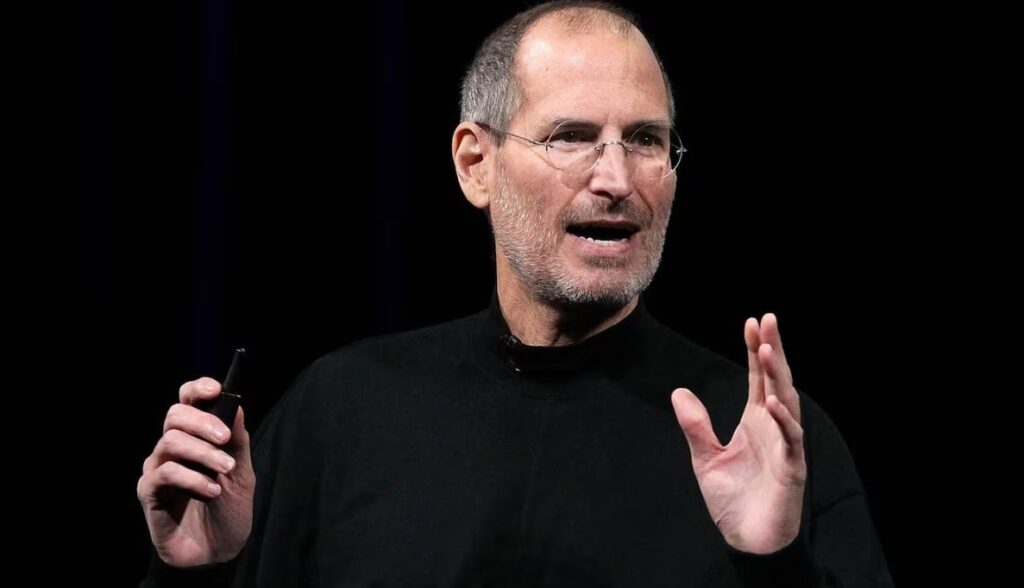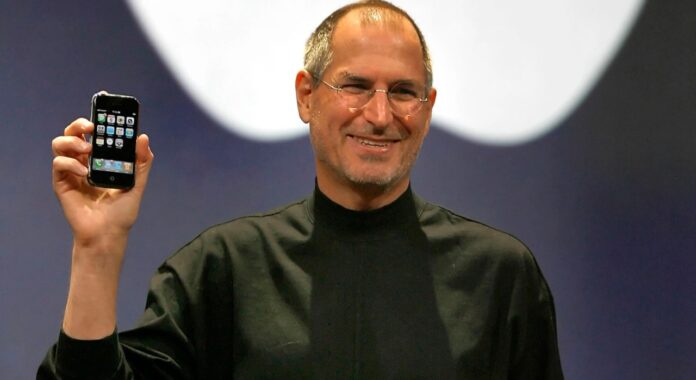Steve Jobs, the co-founder of Apple, made a substantial fortune by developing ground-breaking technologies. His estimated net worth at the time of his death in 2011 was $10.2 billion. Although Apple accounted for a considerable amount of his fortune, he also owned Pixar, which he sold to Disney, making him the company’s largest individual shareholder. Jobs, in contrast to many billionaires, accepted a meagre $1 annual salary from Apple and instead made his fortune via stock holdings. Apple’s supremacy and his estate’s continued influence in the IT and entertainment sectors are two examples of his financial legacy.
Table of Contents
Steve Jobs’ Wife & Children: A Private Family Behind a Public Icon

Steve Jobs met Laurene Powell Jobs in 1989 while lecturing at Stanford Business School. The two became husband and wife. Reed, Erin, and Eve Jobs are the couple’s three children from their 1991 marriage. Although their relationship was tumultuous from the start, Jobs also had a daughter from a prior relationship, Lisa Brennan-Jobs. Jobs was quite secretive about his family life, even though he presented himself as a visionary tech leader in public. Since then, Laurene Powell Jobs has concentrated on charitable giving and educational programs, upholding Jobs’ legacy while simultaneously contributing to social and commercial issues.
Early Life and Education
On February 24, 1955, Steven Paul Jobs was born in San Francisco, California. Paul and Clara Jobs reared him in Mountain View, California, after adopting him. Jobs spent time learning about mechanics and design in his father’s garage, which sparked his early interest in electronics and engineering.
Jobs met fellow electronics enthusiast Steve Wozniak while he was a student at Homestead High School. Jobs attended Reed College after high school but left after only six months. He kept going to unofficial classes, such as one on calligraphy, which eventually impacted Apple’s emphasis on design and typography.
The Birth of Apple
In the garage of Jobs’ parents, Jobs, Wozniak, and Ronald Wayne co-founded Apple Computer in 1976. Wozniak created and constructed the Apple I, their first product, which was a basic personal computer. The success of the Apple II, one of the first extremely popular mass-produced personal computers, was largely due to Jobs’ marketing and sales efforts.
Innovation and Success
The introduction of the Macintosh, the first personal computer with a graphical user interface (GUI) and a mouse, in 1984 marked a significant advancement for Apple. The Macintosh transformed computers by improving its usability and intuitiveness. Internal disputes, however, resulted in Jobs’ dismissal from Apple in 1985, despite the product’s ingenuity.
Unfazed, Jobs started NeXT Inc., a corporation that specializes in high-end workstations for classrooms and offices. NeXT computers developed concepts like object-oriented programming that would subsequently affect contemporary computing, despite their lack of substantial commercial success. Pixar, a top animation firm that produced hit films including Toy Story, was purchased by Jobs in 1986.
Return to Apple and the Rise of a Tech Empire
When Apple purchased NeXT in 1997, Jobs rejoined the business. Jobs oversaw Apple’s incredible turnaround as CEO, launching ground-breaking products:
1. iMac (1998): Personal computing was revolutionised by this fashionable all-in-one computer.
2. iPod (2001): The music industry was revolutionized by a portable music player.
3. iTunes Store (2003): a digital music marketplace that revolutionized music consumption and purchase.
4. iPhone (2007): An innovative smartphone that merged an internet gadget, an iPod, and a phone.
5. App Store (2008): a platform that made it possible for programmers to make and share mobile apps.
6. iPad (2010): Portable computing was transformed by this tablet gadget.
Jobs’ ability to combine design, technology, and user experience allowed Apple to dominate a number of sectors, including entertainment, music, cellphones, and personal computers.
Steve Jobs’ Cause of Death: A Battle with Pancreatic Cancer
Steve Jobs died of complications from pancreatic neuroendocrine cancer on October 5, 2011, at the age of 56. After receiving a diagnosis in 2003, Jobs first chose non-invasive therapies before having surgery in 2004. He continued to be actively involved with Apple despite his deteriorating health, supervising important developments until he resigned as CEO in August 2011. Although his unusual pancreatic cancer progressed slowly, it eventually caused liver problems and organ failure. Despite the passing of a visionary leader, Jobs’ legacy lives on in Apple and the ground-breaking products he helped develop.
Steve Jobs: The Visionary Who Transformed Technology

In addition to being a tech entrepreneur, Steve Jobs was a visionary who transformed how people use technology. He was a major contributor to the creation of the iPhone, Mac, iPad, and Pixar Animation Studios as a co-founder of Apple, making a lasting impression on a number of sectors. The current digital era was moulded by his unrelenting pursuit of innovation, design, and user experience. Jobs passed away in 2011, yet his impact endures because Apple is still thriving today because to the values he instilled. Future generations of innovators are still motivated by his reputation as a trailblazer, inventor, and creative genius.



